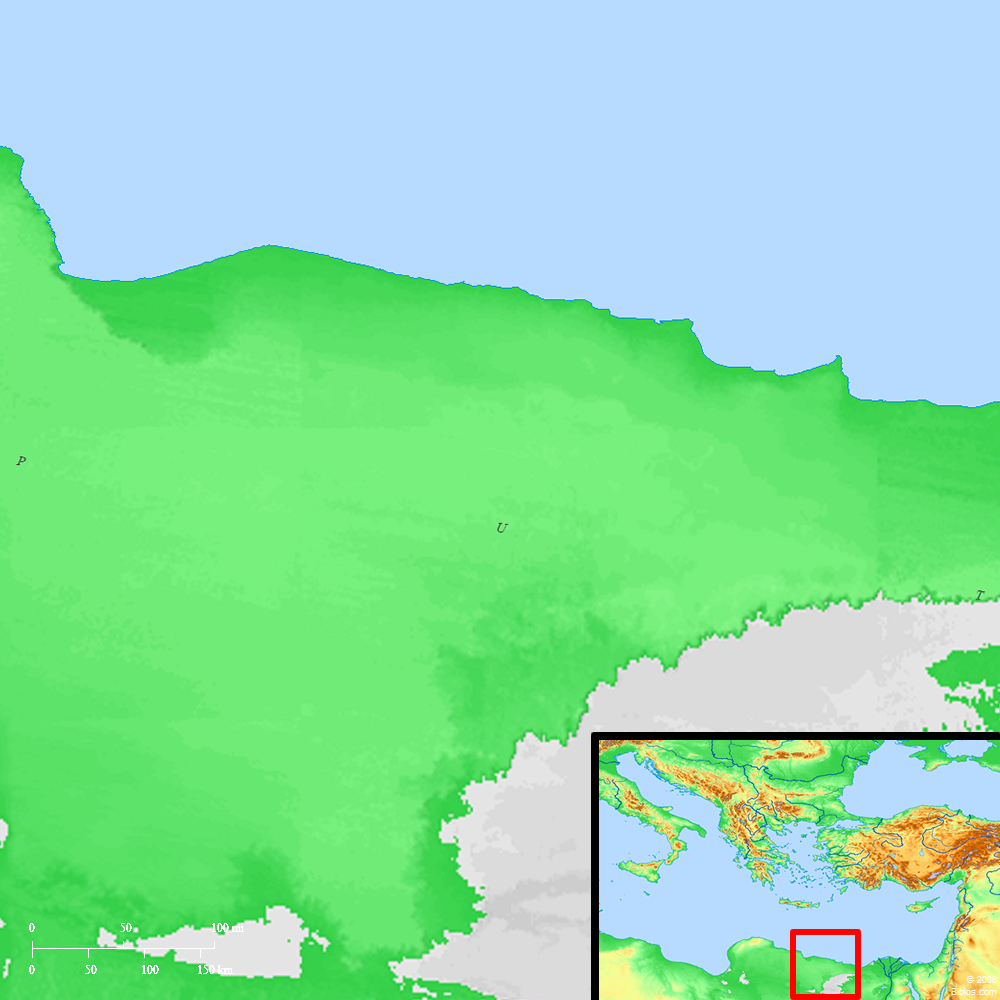Atlas

Put and surrounding region
Maps Created using Biblemapper 3.0Additional data from OpenBible.infoOccurrences
Jeremiah 46:9 Go up, you horses; and rage, you chariots; and let the mighty men go forth: Cush and Put, who handle the shield; and the Ludim, who handle and bend the bow.
Ezekiel 27:10 Persia and Lud and Put were in your army, your men of war: they hanged the shield and helmet in you; they set forth your comeliness.
Ezekiel 30:5 Ethiopia, and Put, and Lud, and all the mixed people, and Cub, and the children of the land that is in league, shall fall with them by the sword.
Ezekiel 38:5 Persia, Cush, and Put with them, all of them with shield and helmet;
Nahum 3:9 Cush and Egypt were her boundless strength. Put and Libya were her helpers.
Encyclopedia
PUTput (puT; Phoud, in Genesis and Chronicles, variant for Genesis Phout, for Chronicles, Phouth):
1. Renderings:
In consequence of the identification at the time, the prophets have "Libya" (Libues), except Nab 3:9, where the Greek renders the word as phuge, "flight." The Vulgate (Jerome's Latin Bible, 390-405 A.D.) has "Phut," "Phuth," and in the Prophets "Libyes" and "Libya"; the King James Version "Phut."
2. Son of Ham:
In the "Table of Nations" Put is the third son of Ham (Genesis 10:6), the first and second being Cush and Misraim, and the fourth Canaan. Put is the only one of the sons of Ham who is not credited with descendants.
3. As Nationality:
In the Prophets, warriors from Put are referred to, principally in connection with the forces of Egypt. They appear as shield-bearers (Jeremiah 46:9: "Cush and Put, that handle the shield; and the Ludim, that handle and bend the bow"). See also Ezekiel 30:5, where the order in the Hebrew is Cush, Put and Lud. In Nahum 3:9 Put is the helper of No-amon (Thebes in Egypt), and in Ezekiel 27:10 Put appears with Persia and Lydia (Lud) as being in the army of Tyre.
4. Identified with Punt:
The common identification of Put is the Egyptian Punt (or Pwent) proposed by Ebers. The assimilation of n to a following consonant is common in the Semitic languages, and would occasion no difficulty if the vocalization be found to agree. The final "t" of Punt, however, seems to be the Egyptian feminine ending, whereas the "T" of Put is radical.
5. Somaliland and Yemen:
Nevertheless, the district would seem to be rightly identified with the tract to the East of Abyssinia (Somaliland), and as it is described as being on both sides of the sea (the Red Sea), Yemen would seem to be included. In connection with this, it is worthy of note that a fragment of a Babylonian tablet referring to Nebuchadrezzar's campaign in Egypt in his 37th year mentions, as though in the neighborhood, the city (here, apparently, standing for the district) of Putu-yaman-probably not "Ionian (Greek) Put" (Lesbos, according to Winckler), but "Put of Yemen." If this be in contra-distinction to the district of Put (Punt) on the African mainland, the latter would be the Putu referred to in the Persian inscription of Naqsh-i-Rustem, which mentions, among the tributary-countries, Kushiya, Putiya and Masiya, in Babylonian (mat) PuTa, ((mat) K)usu, (mat) Massu(?), "the land Put, the land Kush (Ethiopia), the land Massu(?)." The soldiers of Put in the army of Tyre may have been either from the African or the Yemenite Put, in which case there was no northern tract of that name, unless settlements had been made at any time from the original district. See W. Max Muller, Asien und Europa, Leipzig, 1893, 106;.
T. G. Pinches
Strong's Greek
G5159: tropophoreto bear with another's manners




